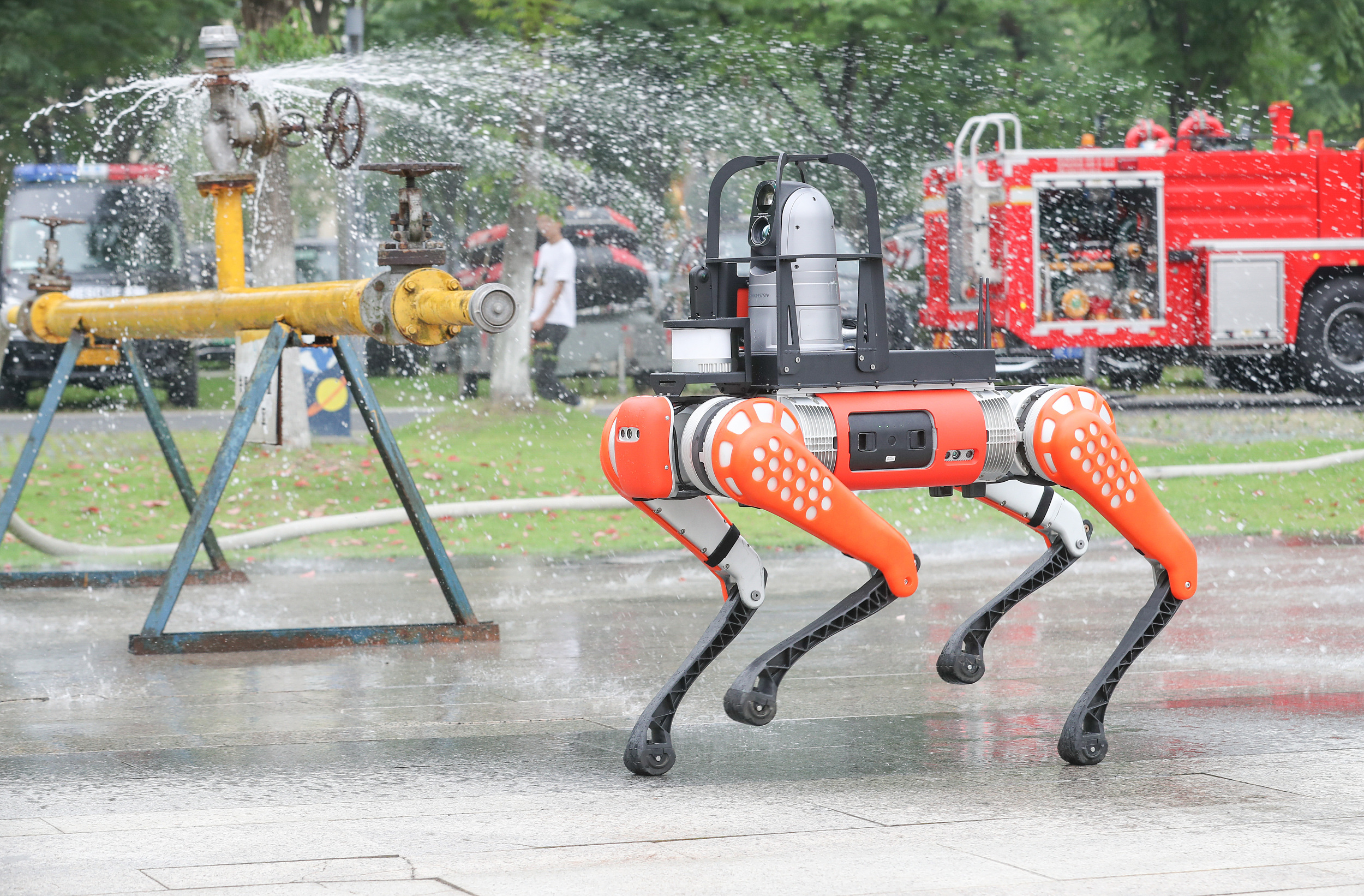Emergency Response Robot Application High on Agenda

A robot carries out inspection near the leakage site of hazardous chemicals at Deqing county, Huzhou city of Zhejiang province. (PHOTO: VCG)
By?CHEN?Chunyou
To accelerate the development and practical application of emergency response robots (ERRs) and advance the modernization of the emergency management system, China plans to develop a series of advanced ERRs by 2025, and enhance their precision and intelligence levels, according to a guideline issued by the Ministry of Emergency Management and the Ministry of Industry and Information Technology.
ERRs can operate semi-autonomously or fully autonomously, and can partially or completely replace humans in safety production, disaster prevention and reduction, and relief work. They can enhance the efficiency and safety of rescue operations in complex and hazardous scenarios.
Li Ying, dean of the School of Emergency Management Science and Engineering at the University of Chinese Academy of Sciences, told Science and Technology Daily that the application of ERRs is a crucial indicator of China's efforts to make emergency management more scientific, professional, precise and intelligent.
In recent years, with the continuous development of technologies represented by AI, 5G and the BeiDou Navigation Satellite System, China has developed various ERRs, such as firefighting robots, earthquake rescue robots and underwater robots, all of which have been applied in real life.
"However, the application of ERRs is still in its infancy and mostly concentrated in the firefighting field. Their application in other fields is still in the stage of testing," Li said.
She said that for rapid and widespread application of ERRs, four key issues need to be addressed: core technological issues, the integration of intelligent equipment with emergency characteristics, practical applications, and the construction of an ERR ecosystem.
According to the guideline, action will be taken to establish key scenario ERR practical testing and demonstration application bases, improve the development ecosystem, and enhance the overall level of practical application and support for ERRs.
To achieve technological breakthroughs, measures will focus on key areas such as enhancing robots' ability to withstand harsh environments, improving their load-bearing functions and modular levels, and enhancing their control and intelligence levels, the guideline said.
To enhance emergency capabilities, various types of robots will be developed. These include reconnaissance robots for risky situations, and robots for life search, material support, firefighting and high-risk scene operations. Other areas are complex scene rescue and emergency response, construction of life passages and communication support.
"This will achieve independent and controllable high-end equipment, enhance the safety of high-risk operations, strengthen unmanned and intelligent emergency rescue capabilities for major and super major disaster incidents, and promote the transformation from direct human confrontation of disasters to a mode of reducing human involvement through relying on robots," Li said.






